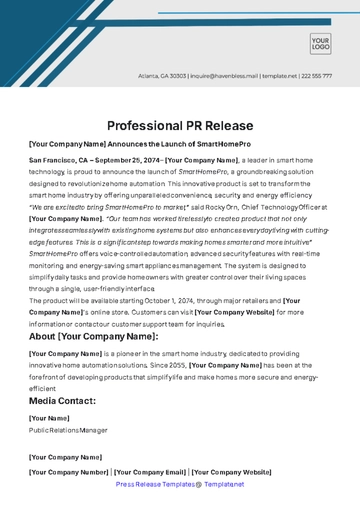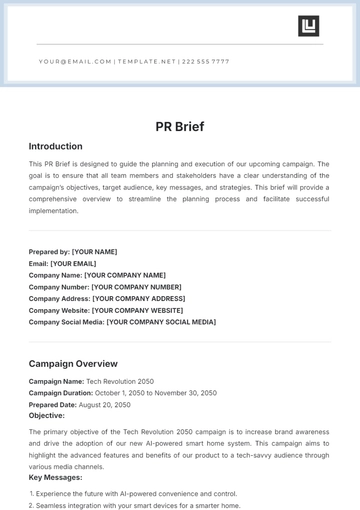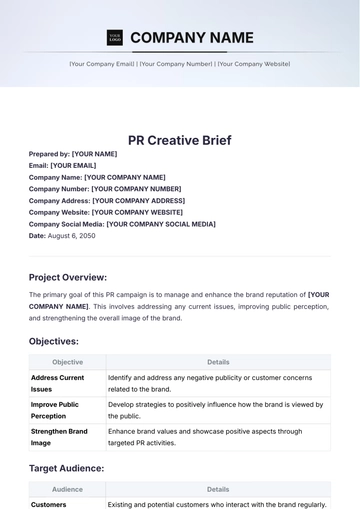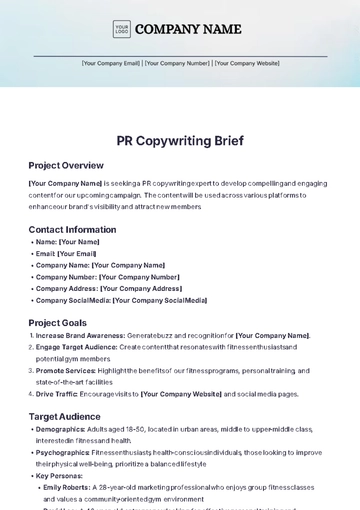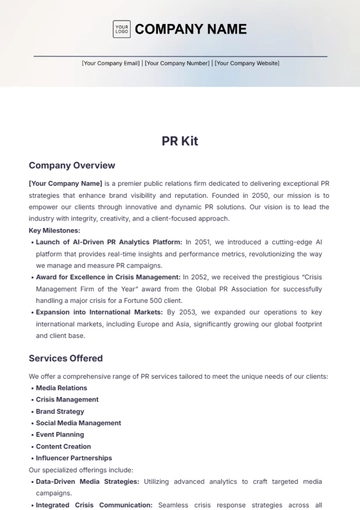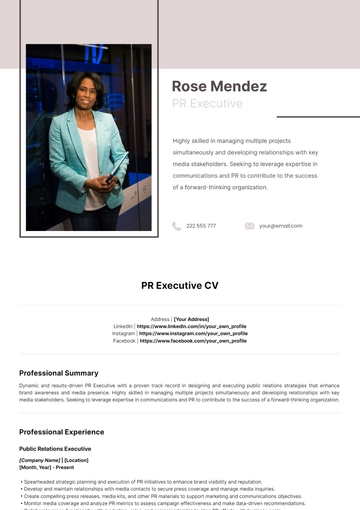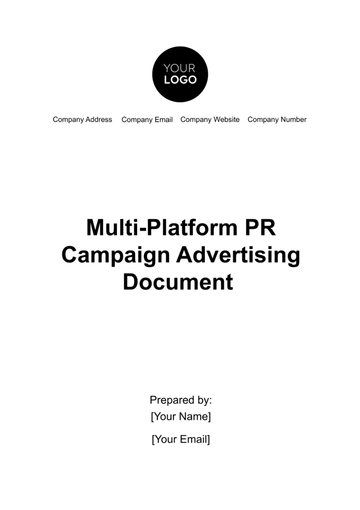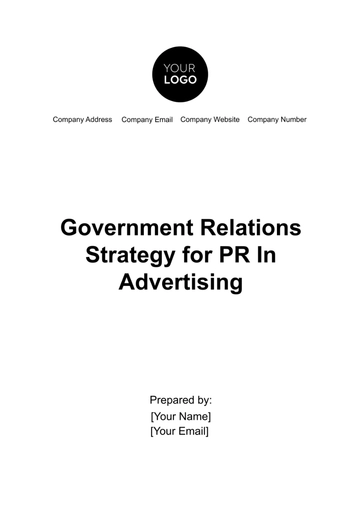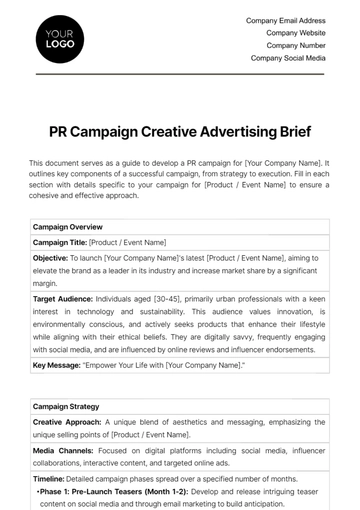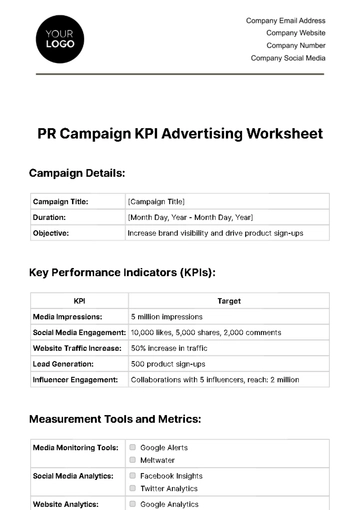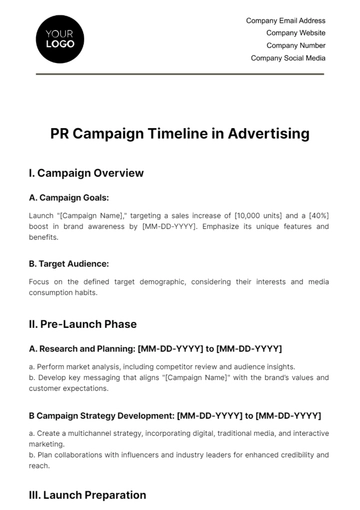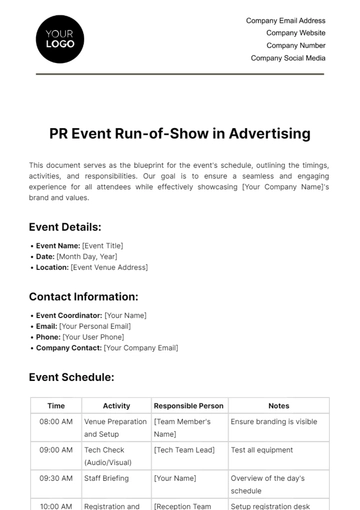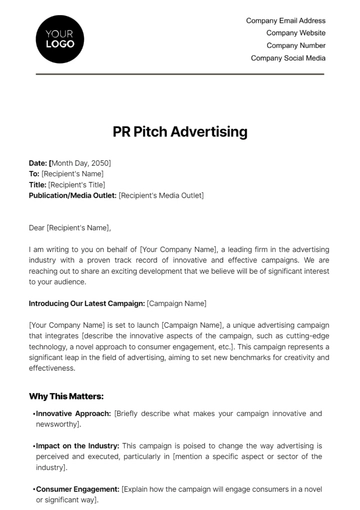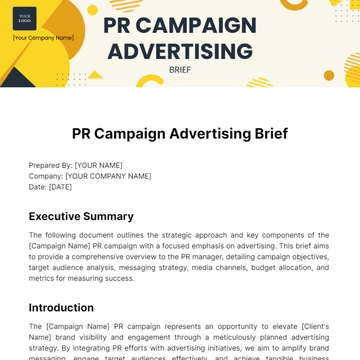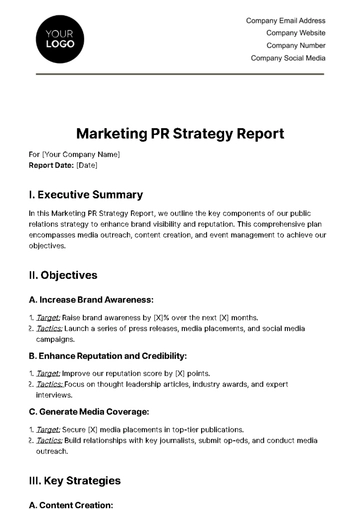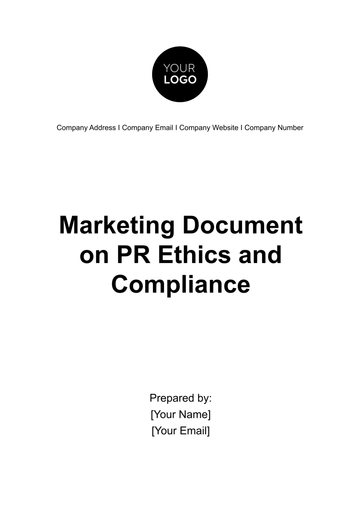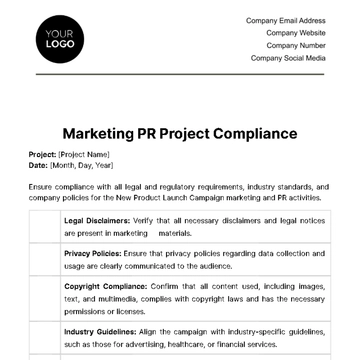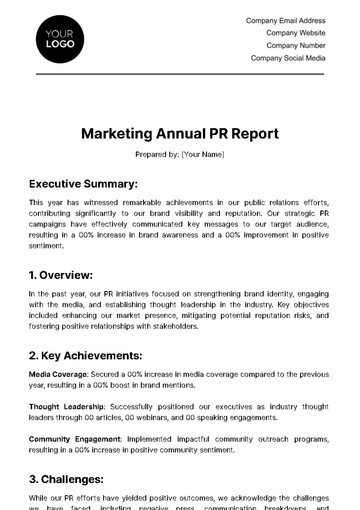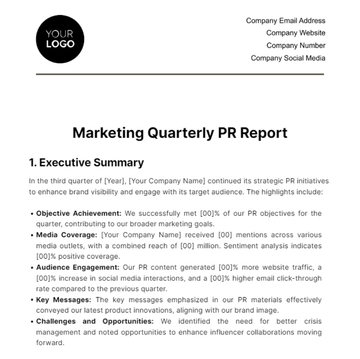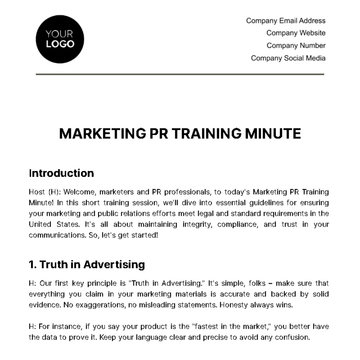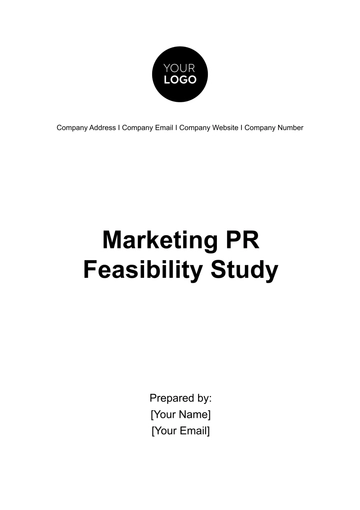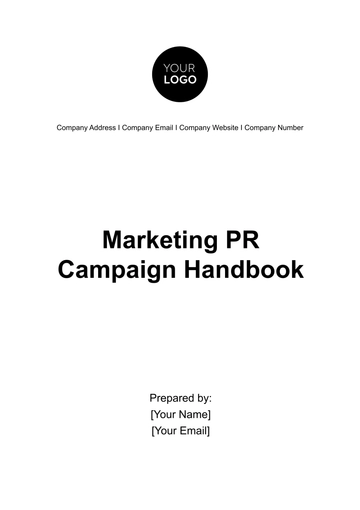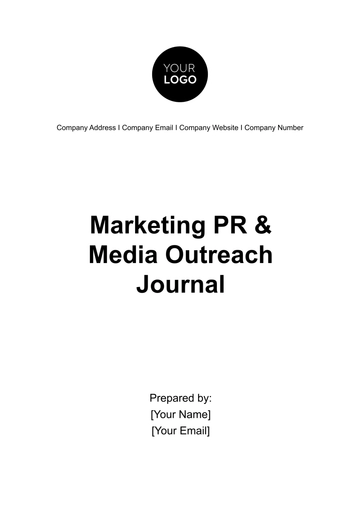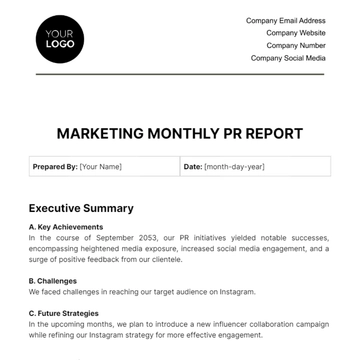Free Government Relations Strategy for PR in Advertising
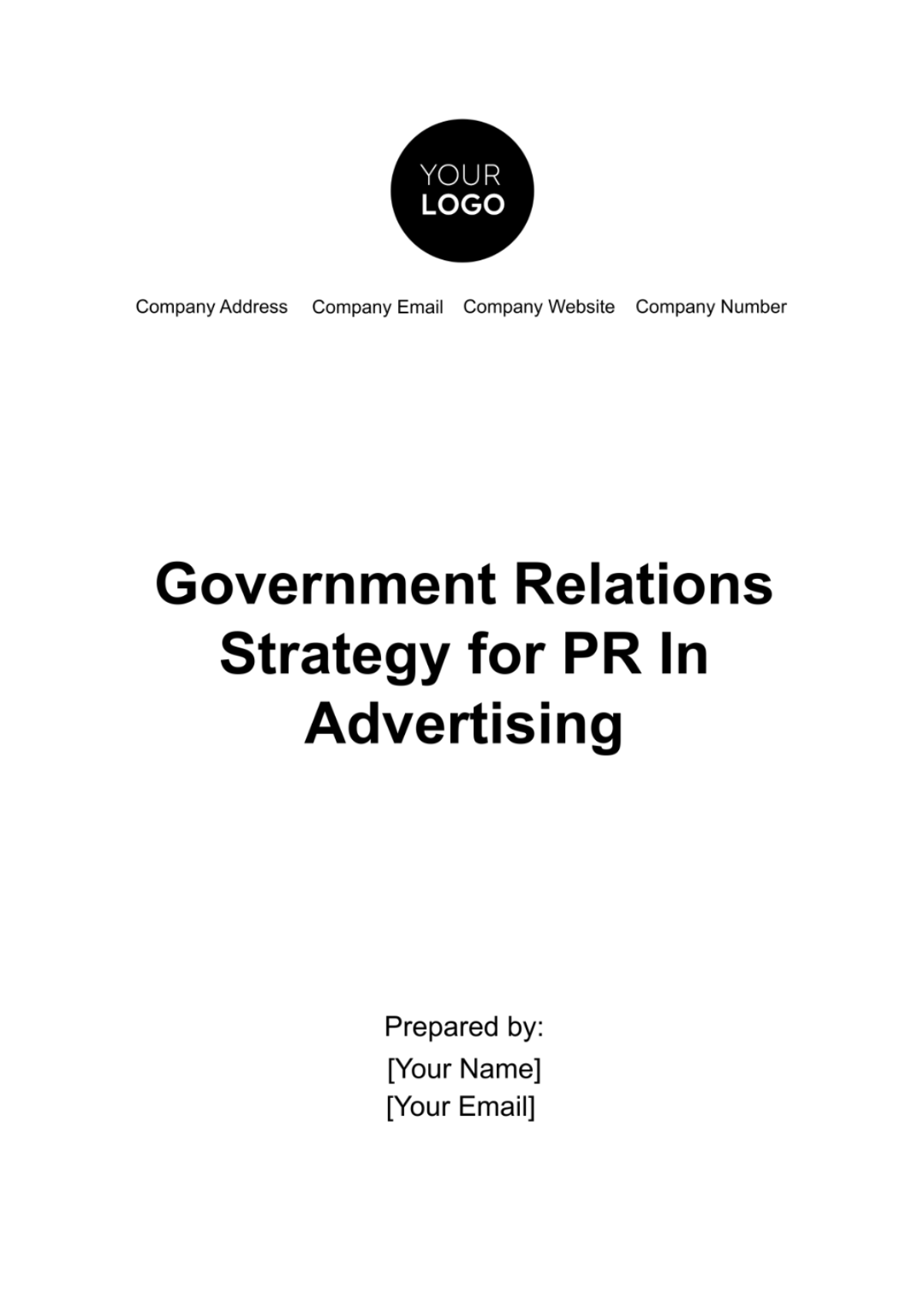
1. Introduction
In the dynamic realm where fashion meets regulation, the fabric of successful advertising weaves through a careful balance of creativity, compliance, and conscientious engagement. As a forward-thinking clothing company, we understand the critical intersection between our advertising endeavors and governmental policies. Our commitment extends beyond style and trends; it encompasses responsible and ethical communication with our audience while navigating the intricate landscape of advertising regulations.
This Government Relations Strategy for PR in Advertising serves as our guiding beacon, illuminating the path towards harmonizing innovative marketing initiatives with the ever-evolving regulatory frameworks. It encapsulates our pledge to uphold not just the aesthetic allure of our brand but also its integrity, transparency, and commitment to compliance.
Within these pages, we delineate a comprehensive approach aimed at fostering collaborative relationships with regulatory bodies, advocating for equitable policies, and ensuring our advertising practices align seamlessly with prevailing laws and ethical standards. Our strategy is rooted in proactive engagement, continual education, and a steadfast commitment to transparency in all facets of our advertising endeavors.
In an era where consumer expectations transcend mere product appeal, our strategy propels us toward a future where responsible advertising is not merely a legal obligation but a moral imperative. We believe that by embracing these principles, we not only fortify our brand’s reputation but also contribute positively to the evolving landscape of advertising ethics and regulation within the fashion industry.
2. Media Contact Database Management
An integral component of [Your Company Name]'s strategic media relations initiative involves the systematic management and utilization of an up-to-date and well-organized media contact database. This section of our SOP is dedicated to outlining the essential protocols and practices necessary for the effective administration of this critical resource.
2.1. Database Organization and Segmentation:
Segmentation Criteria | |
Media Type | Fashion Magazines, Lifestyle Blogs, Local News Outlets, Fashion Influencers. |
Outlet Type | Print, Online, Broadcast. |
Geographical Coverage | National, Regional, and International. |
2.2 Database Fields:
Name | |
Organization | |
Phone | |
Area of Expertise | |
Past Interactions | |
Preferred Communication Methods | |
Personalization Notes |
2.3 Regular Updates:
Quarterly data review and update by designated personnel.
Verify contact information and update preferences.
Data validation upon each new entry.
2.4. Contact Relationship Management:
Record interactions using CRM software or dedicated contact management tools.
Log pitches, responses, published articles, and feedback received.
3. Press Release Protocol
Press releases serve as essential communication tools for [Your Company Name], enabling us to share significant milestones, product launches, collaborations, and brand updates with the media and the public. This section outlines the standardized procedures and guidelines for creating, approving, and distributing press releases effectively.
3.1. Identification of Newsworthy Events:
Criteria for Press Release: Determine events warranting press releases, such as product launches, collaborations, fashion show announcements, CSR initiatives, or notable brand achievements.
Approval Process: Establish a protocol for identifying and approving press-worthy events. Define key stakeholders responsible for greenlighting press releases.
3.2. Press Release Creation Process:
Content Guidelines: Outline the structure and content elements (headline, body, boilerplate, contact information) adhering to brand messaging and storytelling.
Writing Style: Maintain a consistent tone, style, and formatting in line with the brand's voice and values.
Approval Workflow: Define a clear workflow for drafting, reviewing, and approving press releases involving relevant departments or individuals.
3.3. Media Distribution Channels:
Targeted Media Outlets: Identify and segment media outlets (fashion magazines, online publications, local press) based on relevance to the announcement.
Distribution Methods: Specify channels for dissemination, including email pitches, distribution services (PR Newswire, Business Wire), or dedicated media portals.
3.4. Timing and Embargo Considerations:
Embargo Policies: Set clear guidelines for embargoed releases, specifying the date and time for publication.
Release Schedule: Determine optimal timing for release to maximize media coverage and audience engagement.
3.5. Contact and Follow-up Strategy:
Media Contact List: Refer to the meticulously maintained media contact database for personalized distribution.
Follow-up Protocol: Establish a structured follow-up process to ensure receipt and understanding of the press release by media contacts.
3.6. Multichannel Approach:
Integration with Digital Platforms: Incorporate press releases into the brand's website, social media, and newsletters for wider visibility.
Visual Assets Inclusion: Attach high-quality images, videos, or graphics to enhance the press release content.
4. Media Pitching Process
The Media Pitching Process stands as a pivotal bridge connecting [Your Company Name] with influential journalists, editors, and media outlets. This section delineates the systematic approach and best practices for crafting personalized and engaging pitches that resonate with the diverse landscape of fashion, lifestyle, and industry-focused media.
4.1. Targeted Media Identification:
Segmentation Criteria: Define criteria for segmenting media contacts based on relevance, specialization (fashion, lifestyle, local news), outlet type (print, online, broadcast), and geographical coverage.
Media List Compilation: Curate a segmented media list using the database, including journalists, editors, influencers, and bloggers relevant to the brand's niche.
4.2. Personalized Pitch Creation:
Research and Customization: Research each media contact's past work and interests to tailor pitches accordingly.
Story Angle Development: Craft story angles aligning with the brand's narrative, focusing on uniqueness, trends, or newsworthy aspects.
4.3. Pitch Structure and Delivery:
Concise Messaging: Craft a compelling subject line and concise body outlining the story or news angle.
Multi-Channel Delivery: Utilize preferred communication channels (email, social media) as per individual contact preferences.
4. Follow-up Strategy:
Follow-up Timeline: Define a structured follow-up schedule after initial pitches to re-engage contacts.
Personalized Follow-ups: Personalize follow-up messages referencing previous interactions or interests shown by the media contact.
5. Media Pitching Analytics:
Tracking and Analytics Tools: Utilize tracking tools or software to monitor open rates, click-through rates, and responses.
Performance Evaluation: Analyze metrics to assess the effectiveness of pitches and adjust strategies as needed.
5. Media Monitoring and Response
Media monitoring and timely response are vital components of [Your Company Name]'s communication strategy. This section outlines the protocols and procedures designed to track brand mentions, engage with the audience, and manage potential issues or crises across various media platforms.
5.1. Monitoring Tools and Platforms:
Tool Selection: Identify and utilize media monitoring tools (e.g., Brandwatch, Mention, Hootsuite) suitable for tracking brand mentions across various platforms (social media, news websites, forums).
Keyword and Brand Alerts: Set up alerts for brand name, product names, key personnel, and related industry terms to capture relevant mentions.
5.2. Team Allocation and Responsibilities:
Designated Response Team: Assign specific team members responsible for monitoring different platforms and responding promptly to mentions or inquiries.
Roles and Response Timeframes: Define roles, responsibilities, and response timeframes for the response team members.
5.3. Monitoring Metrics and Analysis:
Performance Metrics: Track metrics such as sentiment analysis, engagement rates, and reach of brand mentions to gauge brand perception.
Real-time Monitoring: Monitor in real-time during peak brand interaction hours and key campaign launches or events.
5.4. Crisis Detection and Management:
Alert System: Implement an alert system to swiftly identify potential crises or negative publicity.
Escalation Protocol: Establish clear steps and an escalation hierarchy for handling and escalating crisis situations to the appropriate stakeholders.
6. Crisis Communication Plan
In the unpredictable landscape of the fashion industry, [Your Company Name] understands the importance of being prepared to navigate unexpected challenges that could impact our brand's reputation. This section outlines our Crisis Communication Plan, a strategic blueprint designed to guide our response in times of unforeseen crises.
6.1. Crisis Identification and Classification:
Risk Assessment: Identify potential crises based on internal and external factors that could affect the brand's reputation.
Crisis Categories: Classify crises into categories (e.g., product recalls, negative publicity, social media backlash) based on severity and impact.
6.2. Crisis Response Team and Roles:
Team Formation: Establish a crisis response team comprising key stakeholders from PR, legal, management, and relevant departments.
Roles and Responsibilities: Define specific roles, responsibilities, and decision-making authority for each team member.
6.3. Communication Protocols:
Internal Communication Plan: Create a structured internal communication plan to ensure consistent messaging within the organization during crises.
External Communication Guidelines: Develop predefined message templates and guidelines for external communication across various channels.
6.4. Response Workflow and Escalation:
Response Workflow: Outline a step-by-step workflow for responding to different types of crises, ensuring swift actions and approvals.
Escalation Chain: Establish a clear escalation process to alert higher management or designated crisis leaders for immediate attention.
6.5. Media Relations Strategy:
Designated Spokesperson: Nominate and train designated spokespersons to address media inquiries and public statements.
Media Briefing Protocols: Develop protocols for conducting media briefings or press conferences during crises.
7. Conclusion
The Media Relations SOP stands as a testament to [Your Company Name]'s commitment to fostering impactful and strategic communication within the dynamic world of advertising. This comprehensive document serves as our guiding light, outlining structured methodologies, protocols, and best practices to navigate the multifaceted realm of media relations.
At [Your Company Name], we recognize the pivotal role of media relations in amplifying our brand story, nurturing relationships, and maintaining brand integrity. This SOP underscores our dedication to precision, authenticity, and responsiveness in all our interactions with the media landscape.
As we navigate the ever-evolving advertising sphere, this SOP remains a living framework, continuously adapting to industry shifts, technological advancements, and emergent communication trends. It encapsulates our unwavering commitment to agility, innovation, and the pursuit of excellence in brand communication.
By adhering to the outlined procedures and principles, we affirm our pledge to uphold transparency, engage audiences meaningfully, and safeguard our brand reputation. This SOP serves as a compass, guiding us toward sustained success and resonance within the advertising landscape.
Prepared By: [Your Name]
Date: [Date]
For further details, please contact [Your Email Address] or visit [Your Company Website].
- 100% Customizable, free editor
- Access 1 Million+ Templates, photo’s & graphics
- Download or share as a template
- Click and replace photos, graphics, text, backgrounds
- Resize, crop, AI write & more
- Access advanced editor
Introducing Template.net's Government Relations Strategy for PR in Advertising Template. This editable and customizable tool, powered by our Ai Editor Tool, simplifies the development of effective government relations strategies. Navigate regulatory landscapes seamlessly and craft impactful PR campaigns. Elevate your advocacy efforts with Template.net's innovative solutions.
